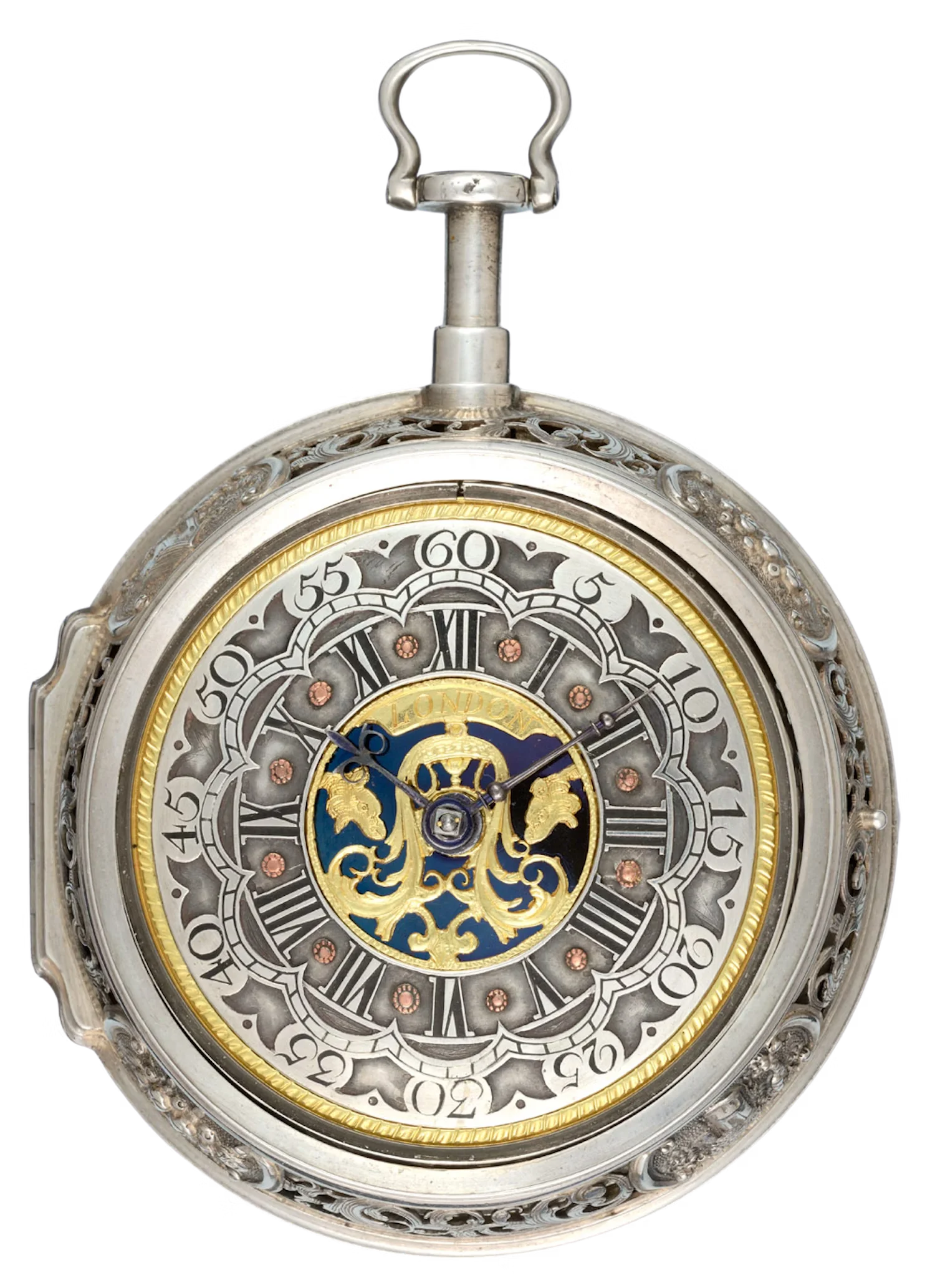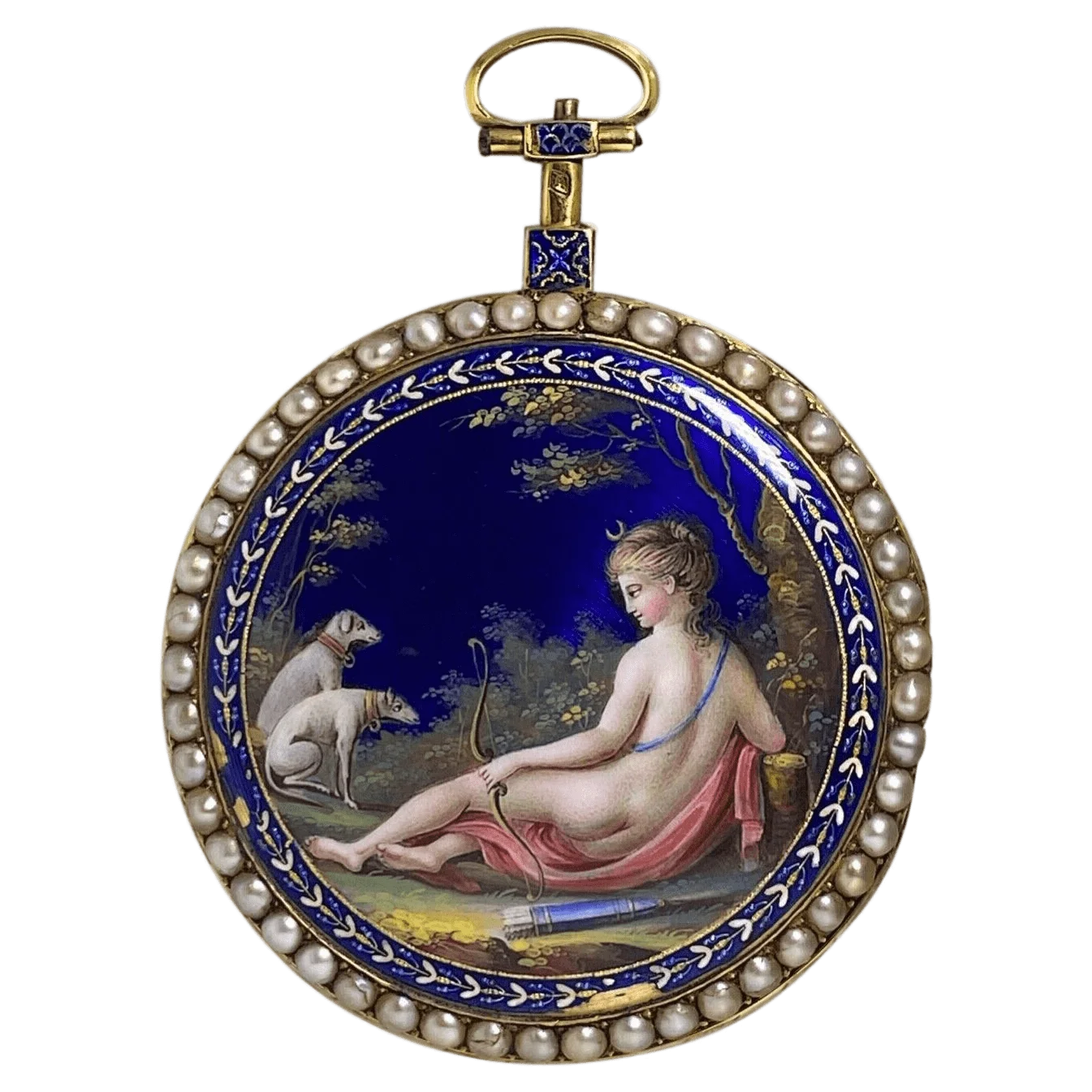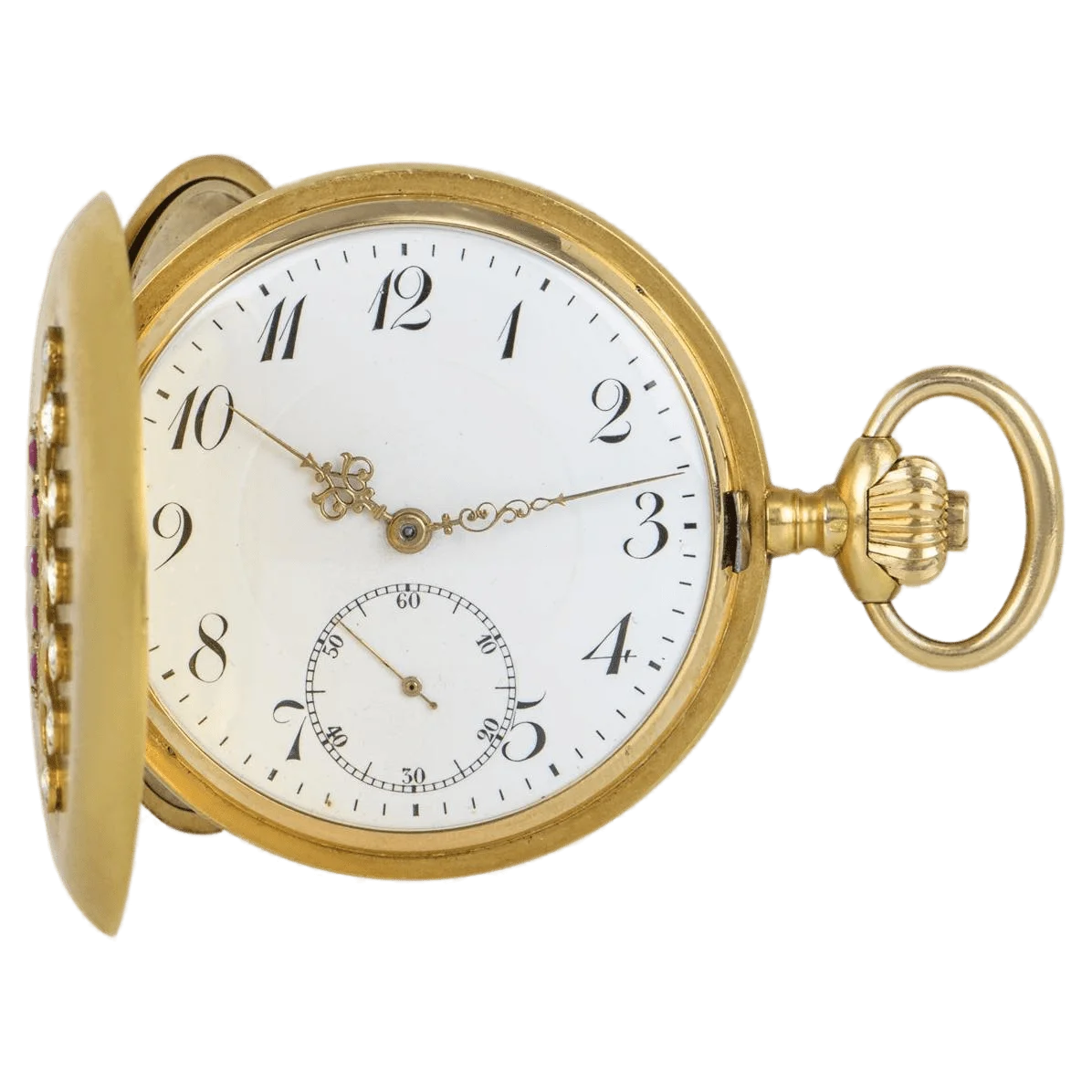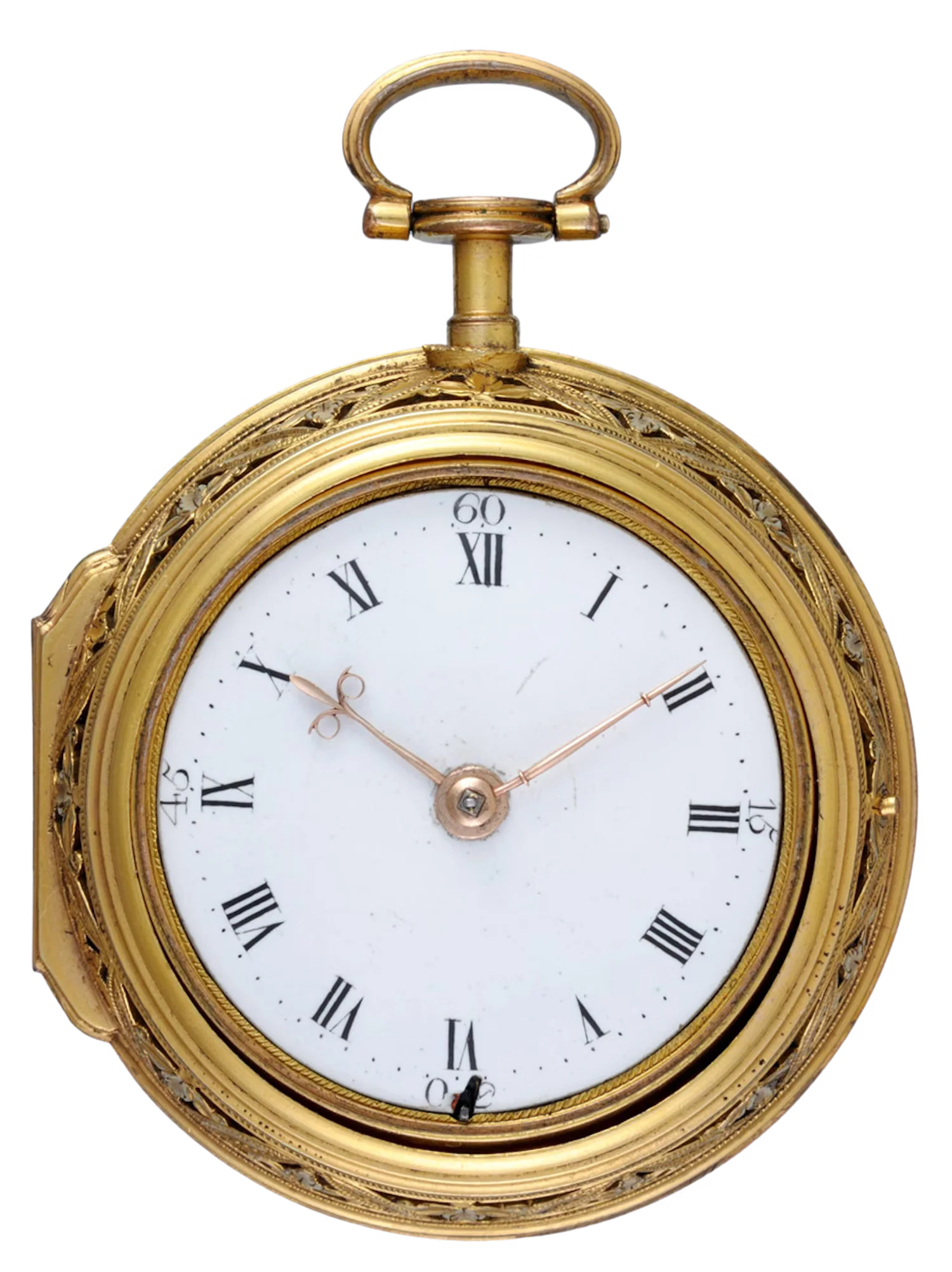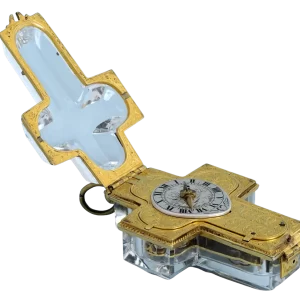ENGLISH CLOCKWATCH Pocket Watch – 1660
Signed Peter Bell London
Circa 1660
Out of stock
£5,480.00
Out of stock
The ENGLISH CLOCKWATCH Pocket Watch from 1660 is a breathtaking example of mid-17th century horological craftsmanship, meticulously designed and executed to perfection. Encased in gilt metal pair cases, this verge clockwatch showcases a movement with a deep full plate fire gilt finish and five pillars, including two early Egyptian-form pillars with small galleries, reflecting the intricate artistry of the era. The fusee and chain mechanism, featuring a worm and wheel barrel setup, is ingeniously placed between the plates, while the striking mechanism for hours resonates through a bell situated at the back of the case. The silver count wheel, engraved with Arabic numerals, elegantly indicates the last hour struck, complemented by a later pierced and engraved cock with a small foot on the balance. The plain steel balance and blue steel spiral hairspring, along with the silver regulator disc, highlight the precision engineering of the time. Decorative elements such as the elaborately pierced and chased blue steel gates and the engraved resting barrel seamlessly blend form and function. The white enamel dial, adorned with Roman numerals and gold beetle and poker hands, is supported by a decoratively engraved dial plate with short turned feet. Signed by Peter Bell of London, this exceptional timepiece, crafted around 1660, is further enhanced by purpose-made pierced and engraved gilt metal pair cases with an inner bell, making it a true masterpiece of historical significance and aesthetic beauty.
This is a stunning mid 17th Century English verge clockwatch housed in gilt metal pair cases. The movement is beautifully crafted with a deep full plate fire gilt finish and five pillars, including two early Egyptian-form pillars with small galleries. The fusee and chain features a worm and wheel barrel setup located between the plates, and the striking mechanism for hours is passed on a bell located in the back of the case. The silver count wheel is engraved with Arabic numerals indicating the last hour struck, and there is a later pierced and engraved cock with a small foot located on the balance. The balance itself is plain steel, and the hairspring is a blue steel spiral. The regulator disc is silver. The elaborately pierced and chased blue steel gates and the engraved resting barrel provide decoration and functionality. The white enamel dial features Roman numerals and gold beetle and poker hands. The dial plate is decoratively engraved and supported by short turned feet. This clockwatch is signed by Peter Bell of London and was crafted around 1660. The purpose-made pierced and engraved gilt metal pair cases, with an inner bell, round out the exceptional beauty of this piece.
Signed Peter Bell London
Circa 1660

